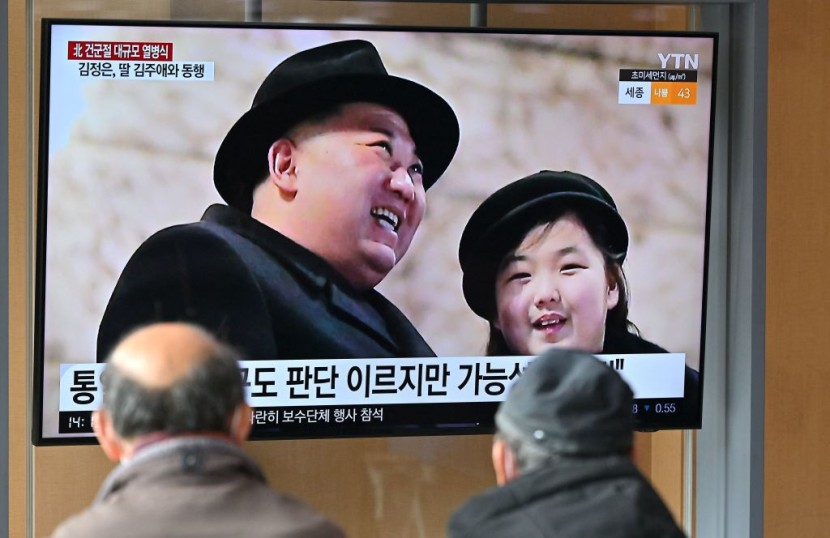
- North Korea unveiled new, smaller nuclear warheads
- Kim Jong Un vows to produce more nuclear weapons
- US Air carriers landed in South Korea after joint military drills
North Korea unveiled new, smaller nuclear warheads as a US aircraft carrier strike group landed in South Korea.
Experts said that the presentation of the Hwasan-31 warheads indicates potential progress by North Korea in developing warheads small enough to fit on intercontinental ballistic missiles capable of striking US territory.
North Korea New Nuclear Warheads
As per Fox News, Kim Jong Un was seen in images provided by North Korea viewing the armaments at a secret site. The KCNA further reported that Kim Jong Un ordered his country's Nuclear Weapons Institute to "expand production of weapon-grade nuclear materials to fully fulfill the goal of the Party Central Committee to increase nuclear arsenals exponentially."
According to Reuters, the incidents occurred as a US aircraft carrier strike group commanded by the USS Nimitz moored in Busan, South Korea, following joint naval exercises. In a recent article, the state-run Rodong Sinmun newspaper stated that the naval exercises constitute "an open declaration of war" and indicate a "preemptive assault" against North Korea.
"It has something more powerful in a smaller space. It is worrisome, "Professor emeritus of nuclear engineering at Seoul National University, Kune Y. Suh, compared the new warheads to their 2016 predecessors.
Kim Dong-yup, a former South Korean navy officer who now teaches at Kyungnam University, stated that the images looked to depict "a tiny, lightweight, and standardized warhead" designed for use with at least eight distinct delivery vehicles, including missiles fired from submarines.
KCNA said that Kim Jong Un ordered the creation of weapons-grade materials to "exponentially" expand the country's nuclear arsenal and build formidable weapons. He stated that the opponent of the nation's nuclear forces was not a single state or organization but rather "war and the nuclear disaster itself" and that the expansion of the arsenal was primarily for defensive objectives and regional security.
John Kirby, the national security spokesperson for the White House, stated in Washington that the United States remained eager to negotiate the verifiable denuclearization of the Korean peninsula but that North Korea has shown no interest in such negotiations.
North Korea's Short-Range Ballistic Missiles
North Korea escalated tensions by launching short-range ballistic missiles on Monday and simulating a nuclear response against the United States and South Korea last week, accusing them of practicing an invasion through their military drills.
KCNA reported in separate dispatches that the North Korean military simulated a nuclear airburst with two tactical ballistic missiles armed with fake warheads on March 25-27 and tested a nuclear-capable underwater attack drone.
Per NBC News, the Haeil-1 underwater drone reached its objective in the seas off the northeastern coast after traveling 373 miles over a "jagged and oval" trajectory for more than 41 hours. The spokesperson for South Korean President Yoon Suk Yeol stated that North Korea does not deserve "one cent" of economic help while pursuing nuclear development.
A spokesman for the South Korean military stated that more testing and analysis would be required to confirm whether or not the North's new warheads are deployable but that the news on the underwater drone was likely "exaggerated and manufactured."
After completing cooperative maritime exercises, a US carrier strike group commanded by the USS Nimitz moored on Tuesday at the Busan naval station in South Korea. It was the first visit by the airline in over six years and coincided with the 70th anniversary of the partnership between the two countries.
Given the North's shifting threats, Rear Admiral Kim Ji-hoon of the South Korean navy stated that the purpose of the joint drills was to bolster US extended deterrence - the military capabilities, notably nuclear forces, to deter assaults on its allies. The strike group commander, Rear Admiral Christopher Sweeney, stated that his ships were prepared for any eventuality. Pyongyang has accused the allies of raising tensions and practicing an invasion through military drills.
Related Article : Kim Jong Un Orders North Korea To Prepare Nuclear Counterattack
@YouTube
© 2025 HNGN, All rights reserved. Do not reproduce without permission.








